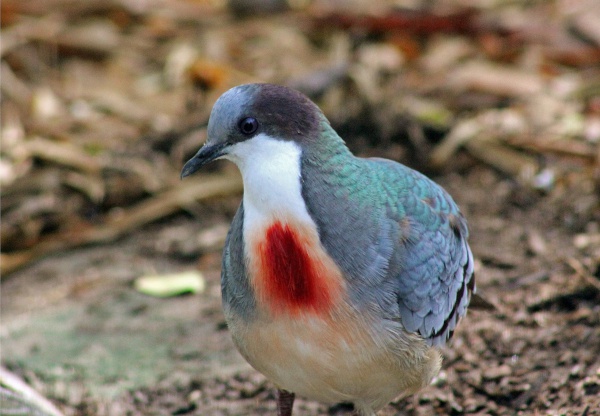Facts About Mindanao bleeding-heart
The Mindanao bleeding-heart, also known as Bartlett's bleeding heart dove or pigeon, and hair-breasted bleeding heart, is a distinct bird indigenous to the Philippines. This species is easily recognized by the prominent red patch on its chest, resembling a bleeding wound. It measures approximately 29 cm in length and features metallic green feathers on its head, a chocolate brown back, and the characteristic blood-red patch on its breast.
This reclusive bird prefers to remain on the forest floor, taking to the air only for short distances when startled. During courtship, it performs a slow, deliberate wing-raising and lowering display. The female lays a single creamy white egg, which she incubates for 15-18 days. The chick is ready to fly just 15-16 days after hatching. The Mindanao bleeding-heart’s diet consists of berries, seeds, worms, and insects that it forages on the forest floor.
This bird inhabits both primary and secondary tropical lowland rainforests, up to an elevation of 750 meters, across various Philippine Islands. Sadly, the Basilan subspecies of the Mindanao bleeding-heart became extinct in the wild in the mid-1900s and now survives only in captivity in American zoos. The species faces significant threats from deforestation and overhunting for food and the pet trade.
Over the years, its conservation status has changed multiple times. It was first listed as least concern in 1988, then upgraded to vulnerable in 1994, and later to endangered in 2000. Currently, the Mindanao bleeding-heart is listed as vulnerable on the IUCN Red List. The exact rate of its population decline remains uncertain, underscoring the need for continued monitoring and conservation efforts.
